Frosted Sugar Cookies
The dye diet of Valentine’s Day
This is my Valentine’s Day special report for you. Food manufacturers love holidays for a different reason: they take the opportunity of profiting from massive sales of their dye-colored cupcakes, pies and cookies. At least nothing misleading you can see on the Lofthouse pack of Frosted Sugar Cookies. Thanks to the manufacturer for no marketing gimmicks! The cookies were made in the USA and distributed by Wal-Mart Stores, Inc. But before you pick them up to treat your loved ones, please consider the information below.
Lofthouse Frosted Sugar Cookies
Net WT 31.50 oz (1lb 15.5 oz) 893 g
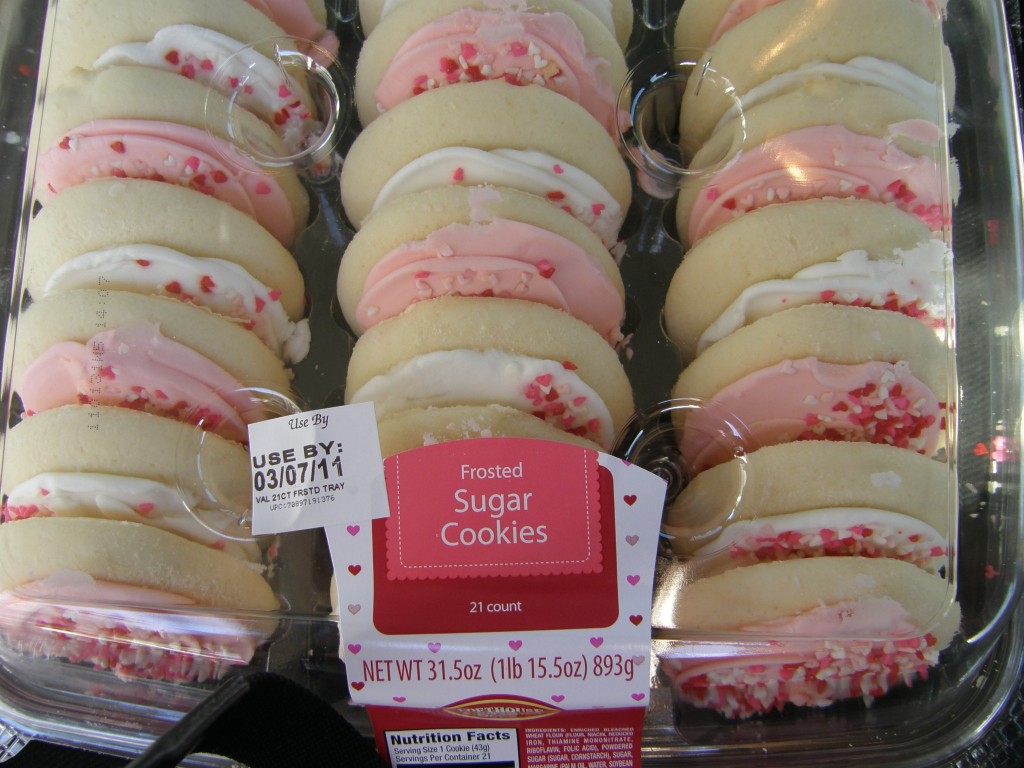
Don’t be misled by the “rosy look” of the cookies. Ingredients list tells us something we need to be aware of before making a decision:
Let me estimate the DyeDiet Risk Score (DDRS) for the Lofthouse Frosted Sugar Cookies and make a comparison with an alternative, Back to Nature Foods Company’s Madagascar Vanilla Wafers made in Canada.
Lofthouse Sugar Cookies Risk Diagram, DDRS ~ 206
Most of the DyeDiet Risk Score (DDRS) for the Sugar Cookies comes with artificial colors and other anti-nutrition foreign additives (14 red segments!):
By definition DDRS is a sum of the DyeDiet Risk Factors of every ingredient. Explanation of why certain DDRF value is assigned to a foreign additive is given below.
Acute toxicity in rats (Median lethal dose), LD50 is ~ 10 g/Kg. Possible adverse health effects that Red 40 dye may produce on a person’s health were listed in the previous post. You can see MSDS Section 11 here (Red 40 MSDS). Red 40 may also contribute into hyperactivity syndrome and Attention Deficit Hyperactivity Disorder (ADHD) in children. This food dye is banned in a number of European countries.
DDRF is 10.
Red 3 (Erythrosine)
This iodine-containing chemical has relatively high toxicity in mouse of LD50 ~ 4 g/Kg (see Red 3 MSDS). According to CSPI Red 3 is (see Food Dyes: A Rainbow of Risks):
- Animal carcinogen and
- Genotoxic (may cause genetic mutations and tumors).
Its DDRF is 10.
Yellow 5 (Tartrazine)
Yellow 5 has lower acute toxicity in mouse of LD50 ~ 12.7 g/Kg according to MSDS file (Yellow 5 MSDS). However Yellow 5 may cause:
- Severe allergic reactions in sensitive people
- Other concerns are hyperactivity and
- Possible link to ADHD in children.
It has a little lower DDRF 7.
This dye is as toxic as Red 40 with LD50 ~ 10 g/Kg in rats but no mutagenic or genotoxic effects listed in its MSDS file (Yellow 6 MSDS). It is believed that Yellow 6 is responsible for the similar allergic and hyperactivity effects in children as Yellow 5 does.
Its DDRF is 8.
According to Blue 1 MSDS (Section 11) this aniline-derived dye with LD50 ~ 2 g/Kg is five times more toxic for rats than Red 40. Toxicological studies on animals revealed the following health complications posed by Blue 1:
- Neoplastic tumor
- Genotoxicity (means genetic mutations, cancer)
- Mutagenic effects (may cause cancer).
DDRF for Blue 1 is 10.
This is very old naturally occurred dye known from ancient cultures. However since the last quarter of 19th century it has been synthesized in thousands of tons a year. While Blue 1 is the least toxic dye of all presented in Lofthouse Frosted Sugar Cookies with acute toxicity in mouse as low as LD50 ~ 32 g/Kg (see MSDS here), statistically significant occurrence of tumors, particularly brain gliomas, in male rats has been detected (Food Dyes: A Rainbow of Risks).
DDRF is 8.
So called lake pigments of dyes are water insoluble forms of the dyes made by combination of the original dye with a metal salt, often aluminum. I have assigned DDRF values of the corresponding dyes to them.
Madagascar Vanilla Wafers Risk Diagram, DDRS ~ 32
Back to Nature Foods Company’s Madagascar Vanilla Wafers made of whole grain wheat flour (DDRF 2 green), evaporated cane juice (DDRF 4 green), palm oil (DDRF 3 green), sea salt (DDRF 5 yellow), mono-calcium phosphate (DDRF 4 yellow) , baking soda (DDRF 4 yellow), ground vanilla beans (DDRF 2 green), vanilla extract (DDRF 3 yellow) and natural flavor (DDRF 4 yellow). Overall Madagascar Vanilla Wafers DDRS is ~ 32, mostly yellow and green and no red segments in the diagram.
Lofthouse Frosted Sugar Cookies vs Madagascar Vanilla Wafers NUTRITION comparison
Total carbs of Lofthouse Frosted Sugar Cookies (67%) consist of 18 g of sugars (42%) that is 4.5 teaspoons per serving, 10 g of starch (23%) and about 1 g of fiber (less than 2%). Also the cookies contain 6 g of fat (14%) and 2 g of protein (5%), totaling 37 g of the nutrients (86%, green segments) per serving size of 43 g. I understand that the rest 6 g (14%) are non-nutritional benign (yellow segments) and foreign (red segments) additives including dyes, 22 additives of 126 g per container overall. If we assume that all eleven (!) dye additives form “less than 2%” then at least 6 g/12 ~ 0.5 g of dyes are present in every serving (one cookie) totaling perhaps 0.5 g x 21 = 10.5 g of dyes per container? I will measure the actual content later on. Again, as in the case of Twizzlers, this is huge amount of the foreign chemicals in food! Is this still a food?
In turn, Madagascar Vanilla Wafers contain comparable 65% of carbohydrates formed by total 30% of sugars, 7% of dietary fiber with the rest 28% contributed by starch of the whole grain wheat flour plus some 5% of additives (I assume). Also the wafers contain 23% of fat (no trans-fat) and about 7% of protein:
|
Frosted Sugar Cookies (Made in USA) |
Madagascar Vanilla Wafers (Made in Canada) |
|
| Dyes per 1 lb | ~ 10 g? | none |
| Price per 1 lb | $3.00 a | $5.29 b |
| Wal-Mart aisle | Cookies | Cookies |
| DyeDiet Risk Score c | 206 | 32 |
| Flour used | Bleached wheat flour | Whole grain wheat flour |
| Stated value | Sugar cookies | Vanilla Wafers,Naturally flavored |
| True value | Sugar cookies with multiply dyes and chemicals | Vanilla Wafers,Naturally flavored |
| Recommendation | NO | YES |
a) Calculated from the original price of $ 6.00 for 1lb 15.5 OZ (893 g) container; b) Calculated from the original price of $2.98 for 9 OZ (255 g) container; c) Risk Score is explained in the previous and “Food Risk Assessment” posts.
Main differences between the two products are:
- Bleached wheat flour vs whole grain wheat flour
- 14% of additives and artificial dyes vs a few % of additives and no dyes
As to the price difference, please consider that with every 893 g container of Lofthouse Frosted Sugar Cookies purchased you wasted $0.85 for 126 g of those needless chemical food additives and artificial dyes so that re-calculated price you pay for the nutrients would be $4.16/lb.
So my point is: Why take unnecessary health risks that come with the dye-colored food when there is a much lower risk alternative sitting at the next aisle? Of course, this is solely your choice. And have a pleasant Saint Valentine’s Day!
Category: Baked goods, Cookies

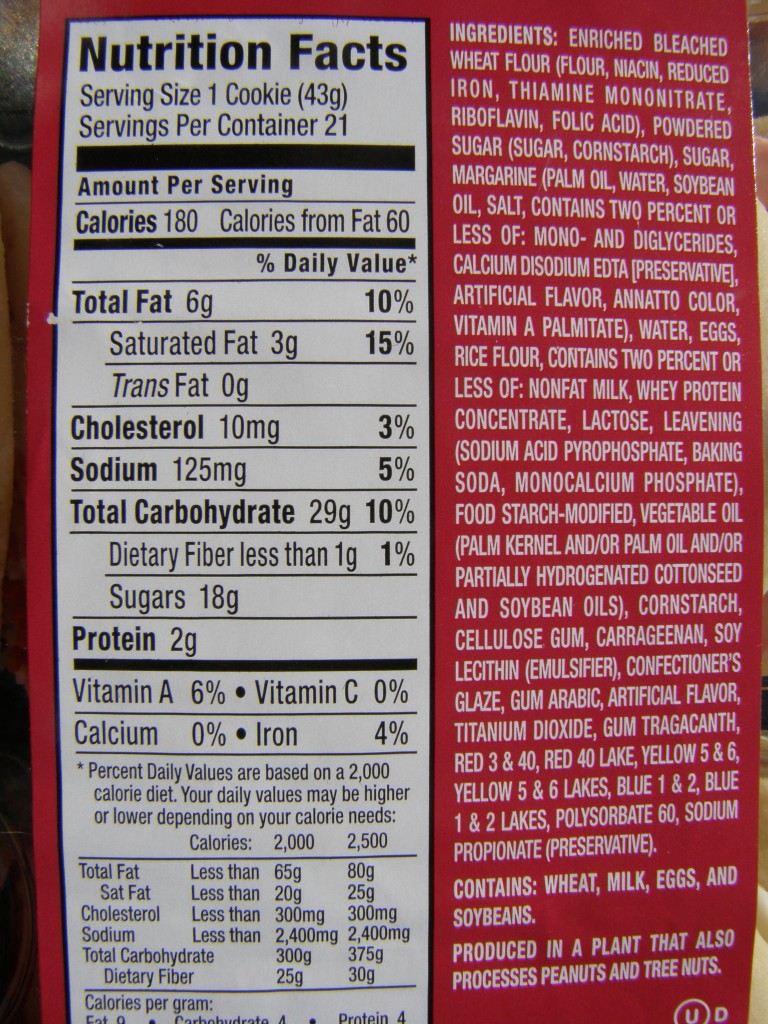
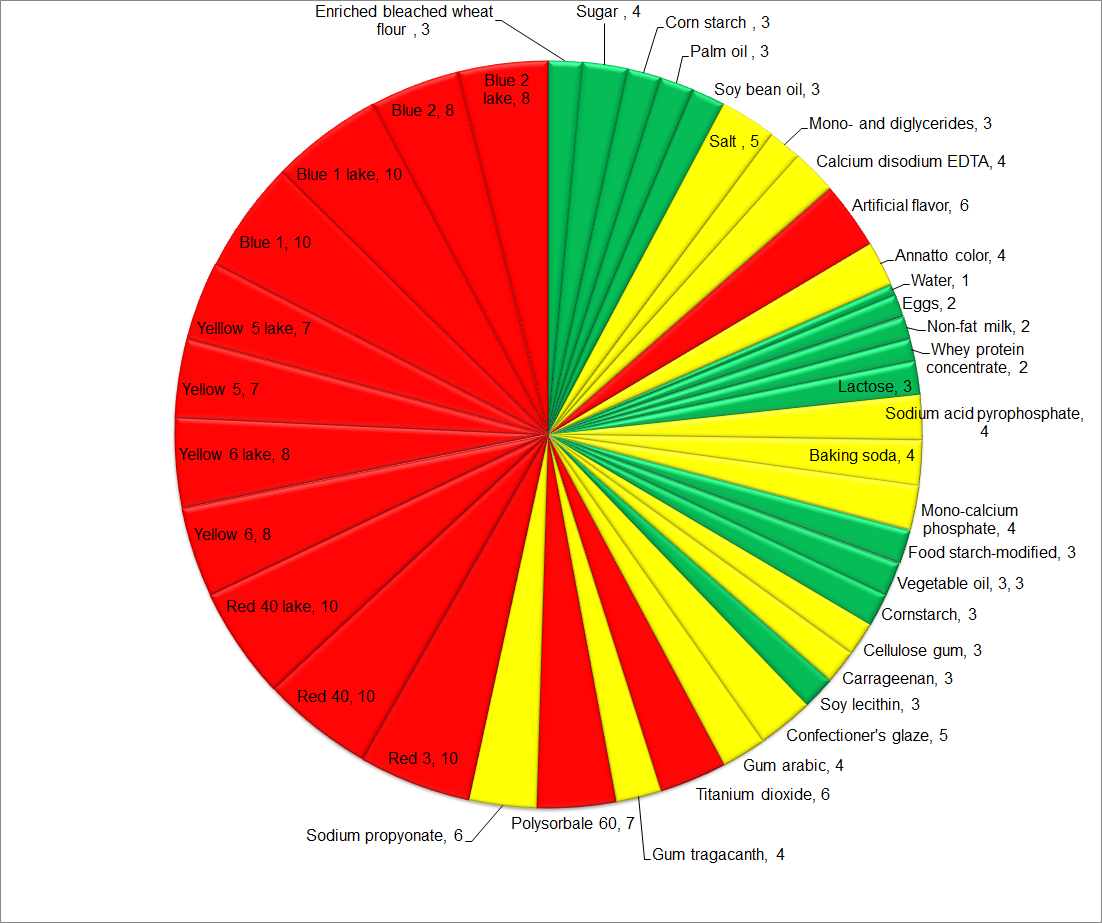
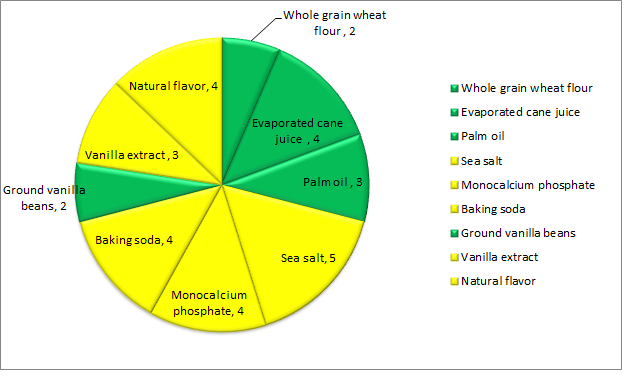
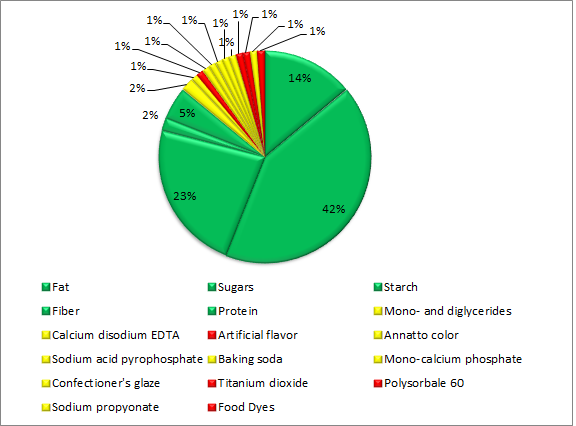
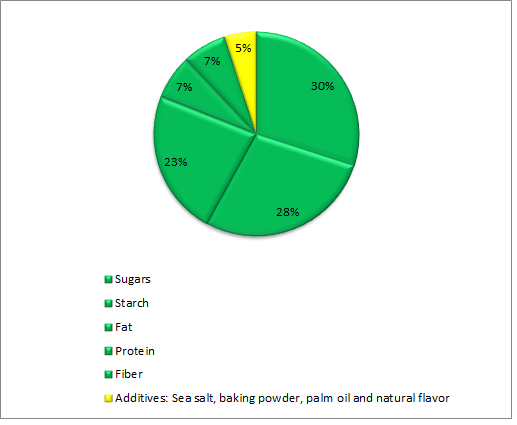
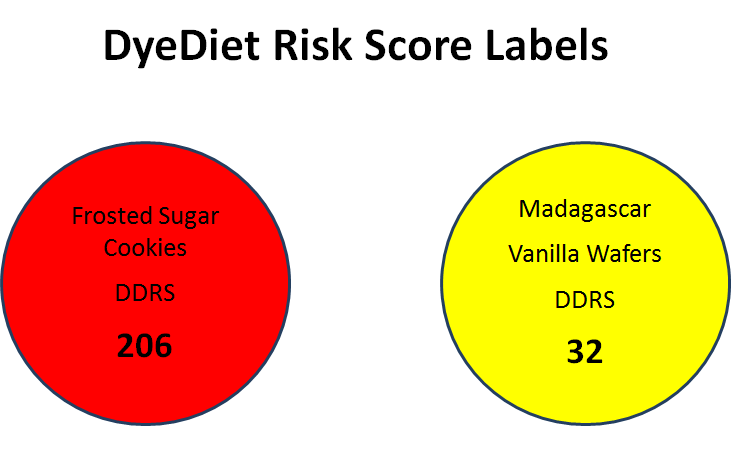




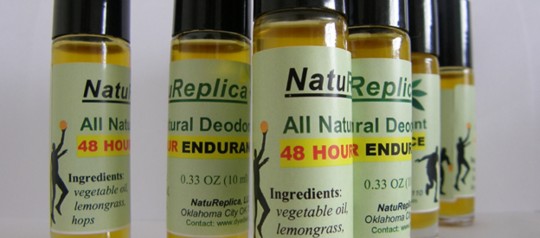
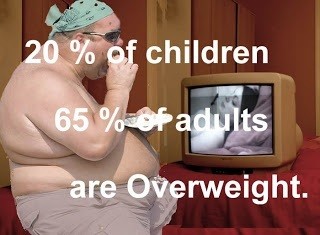
Site This is an unbelievably brilliant blog.
San Juan del Sur Hotel
Great info and straight to the point. I am not sure if this is really the best place to ask but do you people have any ideea where to hire some professional writers? Thank you 🙂
Go http://www.freelancer.com/welcome/